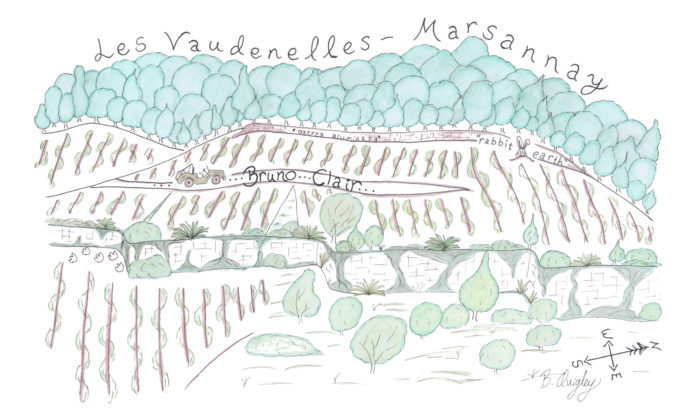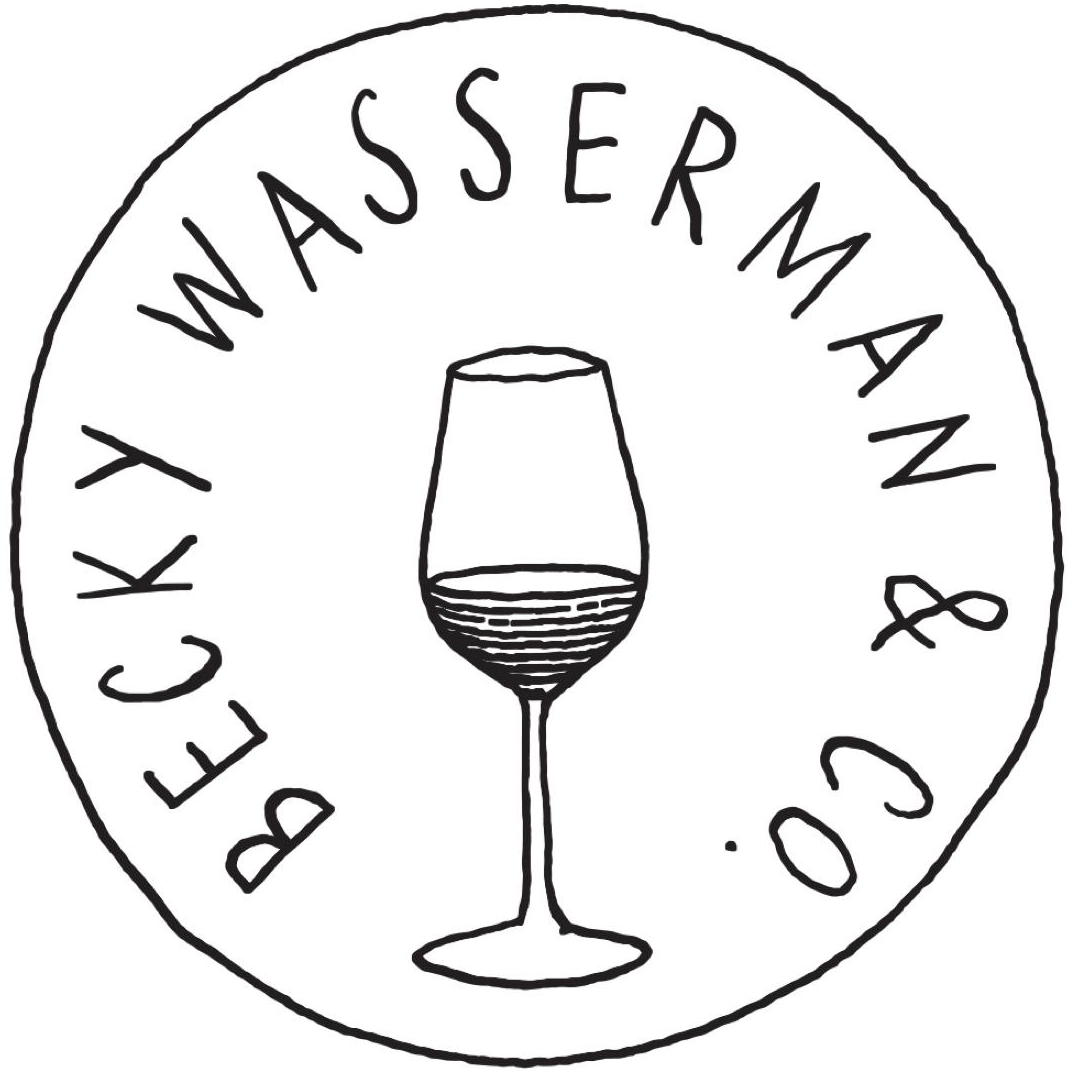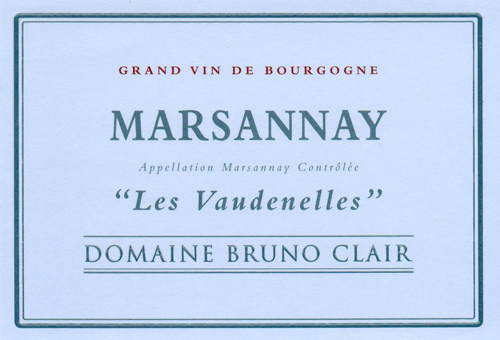Marsannay Rouge Les Vaudenelles

At a Glance
- Size: 1.27 ha (3.13 ac)
- Variety: Pinot Noir
- Vine Age: Planted from 1969 to 1976
- Terroir: Top of Marsannay slope, southeast-facing, 320m average altitude, poor soil with ostrea acuminata bedrock.
- Viticulture: Sustainable, organic practices
- Vinification: 10-20% whole cluster, ambient yeast fermentation in open wood vats with punch-downs. Aged 18-20 months in barrels (approx. 25% new). Short blending period in tank before bottling.
Additional Info
Etymology: This lieu-dit name is a feminine diminutive of the Burgundian patois word Vau, that is derived from the Latin VALLIS, meaning valley. It designates both the slightly hilly landscape of the vineyard and its position: below and near En Lavaux.
Source: The Climats and Lieux-Dits of the Great Vineyards of Burgundy, Marie-Hélène Landrieu-Lussigny.
Site: Les Vaudenelles is 2.7 hectares (6.6 acres). The vineyard sits at 300 to 320-meters elevation. It is perched atop a tall limestone wall that was part of an old quarry that is overgrown by lush green vegetation, including conifers and giant ferns —it appears to be straight out of The Land Before Time. It has a moderate to gentle slope and faces just slightly south of east.
Soils: The soils here are very thin to non-existent; outcroppings of the Ostrea acuminata bedrock are found at the top of the slope. The soils are very light, cream-orange in color, and though they are rich in clay, they also contain a significant amount of gravel and course sand. Bruno says vignerons often call this type of soil “rabbit earth” because the light texture makes it easy for rabbits to burrow into. Les Vaudenelles is indeed home to many families of rabbits. This light texture also means good drainage, but because it is at the top of the slope, Bruno notices that most of the water just runs off down the slope.
Geology: The upper portion of Les Vaudenelles sits on a bedrock of the Ostrea acuminata marl which gradationally transitions to fossiliferous Crinoidal limestone near the middle of the vineyard.
Clair parcel: The Clair family owns 1.6 hectares (3.9 acres). The vines were planted between 1969 to 1976.
The Wine: Les Vaudenelles is another one of Bruno Clair’s high altitude gems. It is the most delicate of his Marsannay lieux-dits and very much a child of its terroir and position. The shallow, light-colored soils produce a wine of fragrance rather than weight, and the altitude keeps it remarkably fresh. We suggest enjoying this wine young, as there is not much tannic structure. A bit of cellaring will reward you with more weight, but we love it young, light, and crunchy.
With many thanks to geologist Brenna Quigley for her illustration, and for putting the physical and geologic aspects of these vineyards into words far more meaningful than we could have written on our own. https://www.brennaquigley.com
We are also greatly indebted to geologist Françoise Vannier of Adama Terroirs Viticoles who created the soil and bedrock maps for Fixin that Brenna based part her work on. www.adama-terroirs.fr
Wines
-
White
-
Rosé
-
Red
- Aloxe-Corton
- Chambolle-Musigny Les Véroilles
- Chambolle-Musigny 1er Cru Les Charmes
- Fixin Champs Perdrix
- Gevrey-Chambertin
- Gevrey-Chambertin 1er Cru Clos du Fonteny Monopole
- Gevrey-Chambertin 1er Cru Petite Chapelle
- Gevrey-Chambertin 1er Cru Les Cazetiers
- Gevrey-Chambertin 1er Cru Clos Saint-Jacques
- Marsannay Rouge
- Marsannay Les Vaudenelles
- Marsannay La Charme Aux Prêtres
- Marsannay Les Grasses Têtes
- Marsannay Les Longeroies
- Morey-Saint-Denis En La Rue De Vergy
- Savigny-les-Beaune 1er Cru Les Jarrons
- Savigny-les-Beaune 1er Cru La Dominode
- Vosne-Romanée Les Champs Perdrix
- Vosne-Romanée 1er Cru Aux Raignots
- Bonnes-Mares Grand Cru
- Chambertin Clos de Bèze Grand Cru

